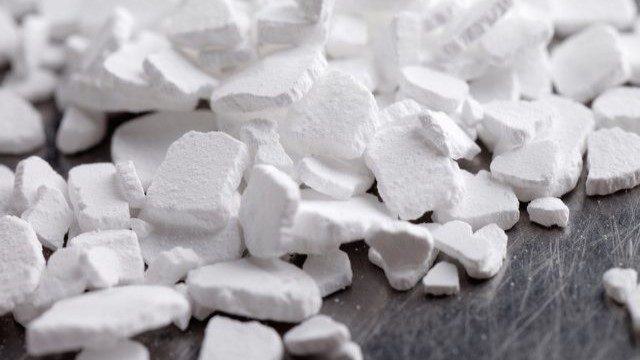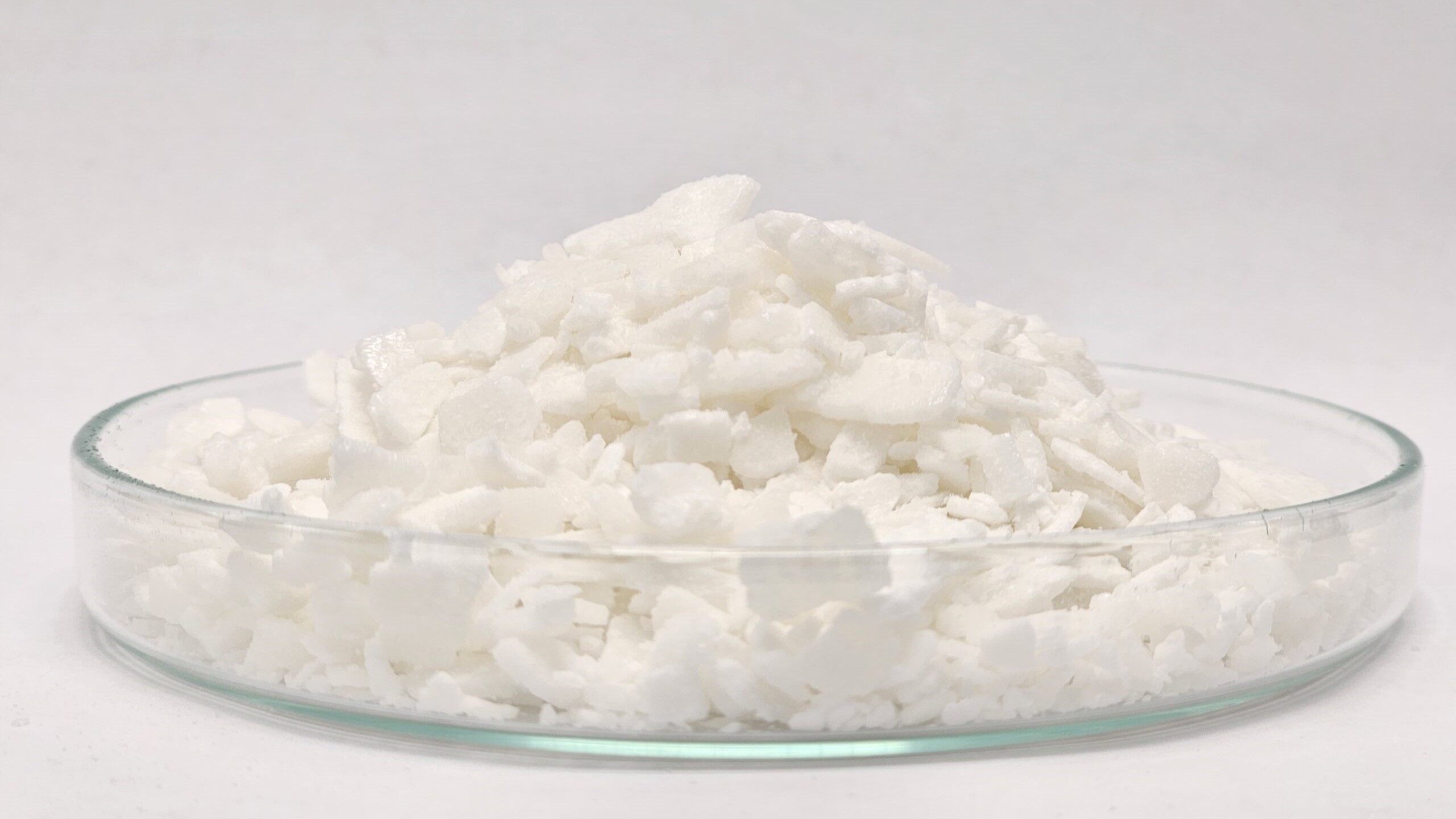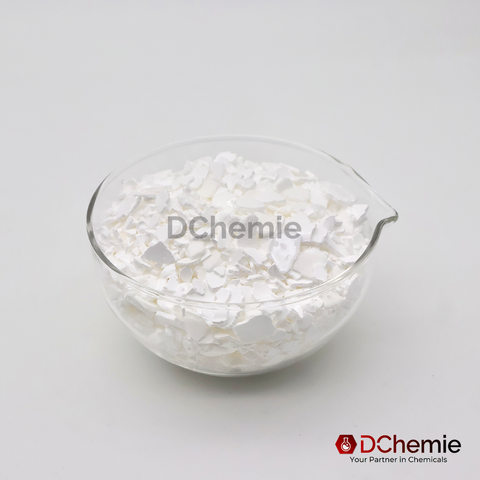
Excess humidity in a room can cause many problems, from mold growth and musty odors to damage to walls, furniture and electronics. In industries like packaging, storage, food, pharmaceuticals and logistics, humidity control is also a critical part of maintaining product quality and safety.
One of the simplest and most cost-effective solutions for absorbing excess moisture from the air is the use of calcium chloride (CaCl₂), a highly effective desiccant.
This article explains why and how calcium chloride works to remove humidity, how to use it safely and when it is the right solution for your application.
What Is Calcium Chloride?
Calcium chloride is an inorganic salt with the chemical formula CaCl₂. It is a white, odorless and highly hygroscopic (moisture-absorbing) material that easily absorbs water from its surroundings, making it ideal for use as a desiccant (drying agent).
It is available in several physical forms:
- Powder
- Granules
- Pellets
- Flakes
- Beads
Why Use Calcium Chloride for Humidity Removal?
There are several reasons calcium chloride is widely used for moisture absorption in closed spaces:
- High Moisture Absorption: Absorbs several times its own weight in water
- Cost Effective: Inexpensive and widely available
- Easy to Use: Can be placed in simple containers or pouches
- Low Maintenance: Works passively without power or machinery
- Long-Lasting: Can last for weeks or months depending on the humidity level
How Does Calcium Chloride Remove Humidity?

Calcium chloride works through a process called deliquescence. This means:
- It attracts moisture from the air.
- It dissolves the absorbed water, turning into a liquid brine (solution).
In a humid room, calcium chloride draws in water vapor until it becomes saturated and liquifies. This liquid can be collected in a container, effectively removing moisture from the air.
Where Can It Be Used?
Calcium chloride can be used in many environments to reduce humidity, including:
- Homes: closets, basements, bathrooms, storage rooms
- Warehouses: for protecting stored goods from mold or corrosion
- Shipping Containers: to prevent moisture damage during transport
- Food Storage: helps keep packaging areas dry
- Pharmaceutical Rooms: to maintain dry storage conditions
- Garment and Textile Storage: prevents mildew and fabric damage
How to Use Calcium Chloride to Remove Room Humidity
Let’s break down a simple step-by-step method to use calcium chloride as a room dehumidifier.
1. Choose the Right Form of Calcium Chloride
- Pellets or granules: Ideal for DIY home use
- Flakes or powder: Faster action but may cake easily
- Tablets or beads in bags: Good for controlled release in containers or closets
Make sure to choose food-grade or technical-grade calcium chloride depending on your application.
2. Prepare a Simple DIY Setup
You don’t need any special equipment. You can use:
- A plastic container or bowl
- A cloth or mesh bag
- A drip tray or second container to collect the water
DIY Setup Example:
- Place calcium chloride granules in a breathable cloth pouch.
- Hang the pouch in a plastic bottle or above a container.
- As moisture is absorbed, water drips into the bottom container.
This setup works passively without electricity.
3. Monitor and Replace as Needed
- Over time, calcium chloride will turn into a salty liquid brine.
- When fully liquefied, discard the liquid and refill with new granules.
- Depending on room humidity, 1 kg of CaCl₂ can last from 2 weeks to 2 months.
How Much Calcium Chloride Do You Need?
The amount of calcium chloride needed depends on room size and humidity level.
Room Size | Humidity Level | Suggested CaCl₂ Amount |
Small Room (~10 m²) | Moderate (~60% RH) | 200-300 g per month |
Medium Room (~25 m²) | High (>70% RH) | 500-700 g per month |
Large Storage (~50 m²) | Very High (>80% RH) | 1-2 kg per month |
Tip: In shipping containers, desiccant packs containing 1-2 kg of calcium chloride are commonly used to protect cargo.
Comparison with Other Dehumidifying Methods
Method | Pros | Cons |
Calcium Chloride | No electricity, low cost, simple to use | Needs manual disposal of collected liquid |
Electric Dehumidifier | Continuous removal, works in large spaces | Higher cost, power usage, requires maintenance |
Silica Gel | Reusable, works well in sealed containers | Limited capacity, not suitable for large areas |
Charcoal/Mineral packs | Natural, mild deodorizing effect | Much lower absorption rate than CaCl₂ |
Is It Safe to Use Calcium Chloride Indoors?
Yes, calcium chloride is generally safe when used properly. However, some precautions should be followed:
- Keep out of reach of children and pets.
- Do not ingest or touch liquid brine with bare skin for long periods.
- Store in a sealed container when not in use.
- Avoid contact with metal surfaces, as it may cause corrosion.
If spilled, clean with water and avoid leaving the solution on porous surfaces.
Tips for Better Moisture Control with Calcium Chloride
- Use multiple small containers instead of one large container for even coverage.
- Place near doors, windows or corners where humidity tends to collect.
- Use in combination with ventilation for better results.
- In sealed spaces (like cabinets or boxes), use sealed desiccant bags.
Environmental and Disposal Considerations
The brine solution that forms is mostly water with dissolved calcium and chloride ions. You can:
- Dispose in household drains (if allowed locally)
- Rinse thoroughly with water after disposal
Avoid disposing near plants or natural waterways as high salt concentration can affect soil and water quality.
Conclusion

Calcium chloride is a simple, low-cost and effective way to reduce humidity in rooms, storage areas and transport environments. It works silently in the background and requires no power or machinery. Whether you're protecting household goods, commercial inventory or packaged goods during shipping, calcium chloride is a reliable moisture control agent used across many industries.
When used correctly, it can help you prevent mold, reduce damage and maintain better air quality, all with minimal effort.


